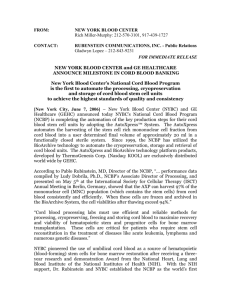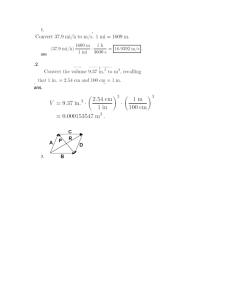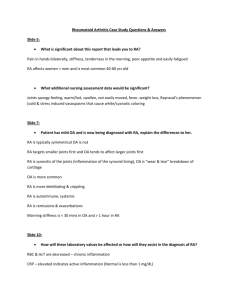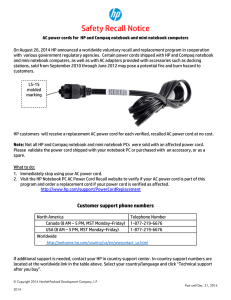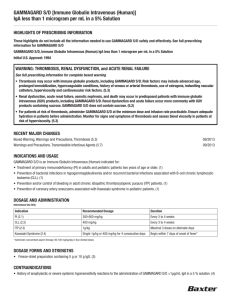Phoenix Children`s Hospital Research Institute (PCRI) Website
advertisement
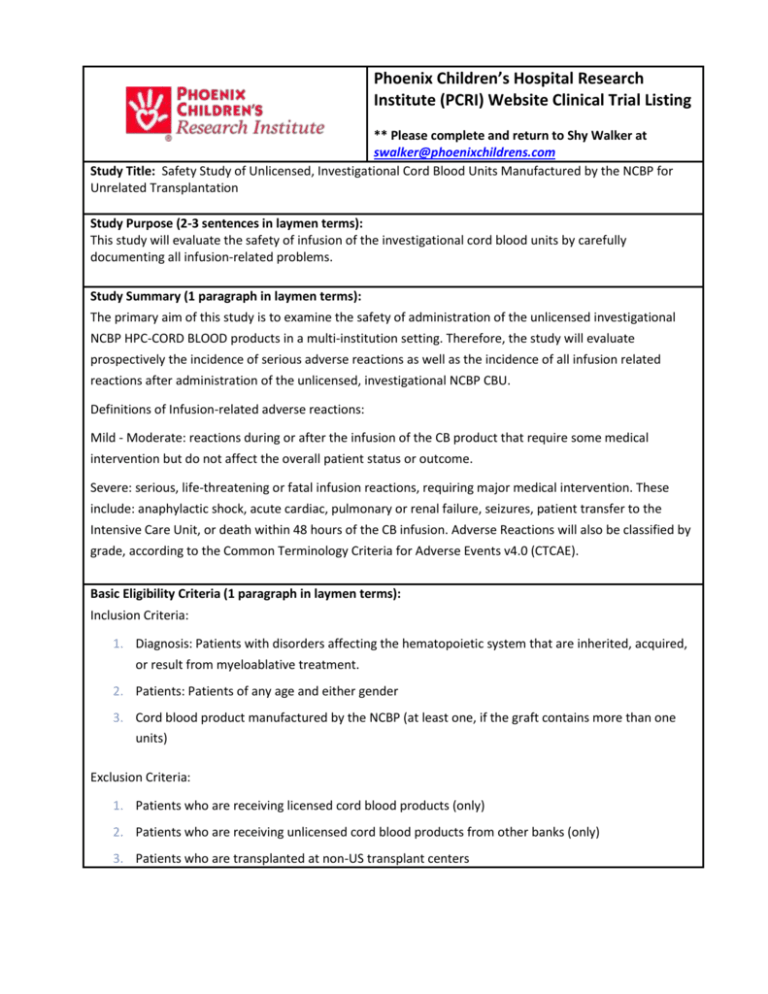
Phoenix Children’s Hospital Research Institute (PCRI) Website Clinical Trial Listing ** Please complete and return to Shy Walker at swalker@phoenixchildrens.com Study Title: Safety Study of Unlicensed, Investigational Cord Blood Units Manufactured by the NCBP for Unrelated Transplantation Study Purpose (2-3 sentences in laymen terms): This study will evaluate the safety of infusion of the investigational cord blood units by carefully documenting all infusion-related problems. Study Summary (1 paragraph in laymen terms): The primary aim of this study is to examine the safety of administration of the unlicensed investigational NCBP HPC-CORD BLOOD products in a multi-institution setting. Therefore, the study will evaluate prospectively the incidence of serious adverse reactions as well as the incidence of all infusion related reactions after administration of the unlicensed, investigational NCBP CBU. Definitions of Infusion-related adverse reactions: Mild - Moderate: reactions during or after the infusion of the CB product that require some medical intervention but do not affect the overall patient status or outcome. Severe: serious, life-threatening or fatal infusion reactions, requiring major medical intervention. These include: anaphylactic shock, acute cardiac, pulmonary or renal failure, seizures, patient transfer to the Intensive Care Unit, or death within 48 hours of the CB infusion. Adverse Reactions will also be classified by grade, according to the Common Terminology Criteria for Adverse Events v4.0 (CTCAE). Basic Eligibility Criteria (1 paragraph in laymen terms): Inclusion Criteria: 1. Diagnosis: Patients with disorders affecting the hematopoietic system that are inherited, acquired, or result from myeloablative treatment. 2. Patients: Patients of any age and either gender 3. Cord blood product manufactured by the NCBP (at least one, if the graft contains more than one units) Exclusion Criteria: 1. Patients who are receiving licensed cord blood products (only) 2. Patients who are receiving unlicensed cord blood products from other banks (only) 3. Patients who are transplanted at non-US transplant centers 4. Patients who are receiving cord blood products that will be "manipulated" post-thaw (e.g., ex vivo expansion, incubation in vitro, etc.) Study Location(s): Phoenix Children’s Hospital Study Contact(s): Alan Holzkopf, CCRC aholzkopf@phoenixchildrens.com


